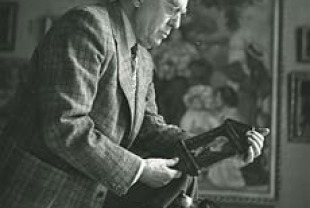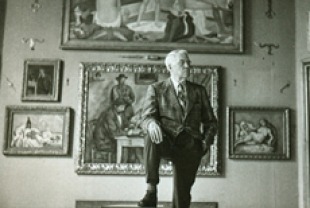Dr. Albert Barnes was born in a working-class neighborhood in Philadelphia in 1872. He went on to graduate from medical school and to gather a fortune from a pharmaceutical breakthrough. In 1922 Barnes created the Barnes Foundation in Lower Merion, Pennsylvania, five miles out of Philadelphia. By this time, he had put together a private collection of Post-Impressionist and early Modern art which was the envy of larger museums around the world. Here were paintings by Pierre-Auguste Renoir (181), Paul Cezanne (69), Henri Matisse (59), Pablo Picasso (46), Edgar Degas (11), Claude Monet (4) and many others.
Everyone was impressed except the cultural elite in his hometown who criticized his collection as "horrible, debased art." This evaluation set up a feud between Barnes and his upper-class detractors which would continue until his death in a car accident in 1951. In his will, he ordered the Foundation to always be an educational institution and that the paintings could never be removed. Barnes created these restrictions in order to make sure that his prized collection would never fall into the hands of greedy or commercial individuals or groups that wanted to make money off these masterpieces with tours around the world and the like.
Don Argott directs this fascinating documentary about the continuing saga in America of the wheeling and dealing of the rich and the powerful to get what they want. The labyrinthine story of the Barnes art collection is told through commentary by Barnes Foundation alumni, journalists, art historians, and other critics who are highly critical of the attempts to take over the art collection and move it to Philadelphia. Some of the major players involved in this concerted drive include Pennsylvania's Governor Edward Rendell, former attorney general Mike Fisher, Pew Trusts, The Annenberg Foundations, and other corporate entities. The Barnes Collection has recently been valued at more than $25 billion.
This riveting documentary charts a grave injustice to a lover of art whose fondest desire was to share his collection with ordinary people rather than demystify it in the cold and inhospitable setting of a modern gallery.

